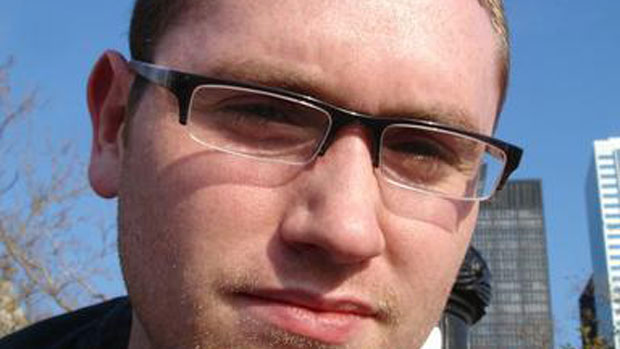The Run of the Streets

By Karl Whitney.
[PDF]
I close the door of the apartment and duck through the corridors, under the low wooden beams, down the stairs past the post boxes on which the names of the inhabitants of the building are printed; one of them reads ‘Bastard’.
I press the button to release the heavy front door and I’m out on the street. Suddenly, Parisian life teems around you, like the volume has just been turned up. Like you’ve just been underwater and have quickly surfaced.
I set off at pace along the street, dodging past the tables of the small cafés that adjoin our building. I pass the small community garden on the corner, cross the small side street and run in the direction of the traffic lights at the top of the street. Trousseau, Charles Delezcluse, Charonne: these are the three streets that I’ve so far intersected on my run from the apartment in the 11th Arrondissement.
On 3rd December 1851, at the southern end of rue Trousseau, Alphonse Baudin, a deputy in the French Assembly, was shot dead on a barricade that had been erected after the previous day’s seizure of power by Louis Napoleon. On the wall of a building nearby, a plaque whose text is etched in gold paint commemorates his death.
Paris is a city upon which so many layers of history can be read that sometimes it can seem not a living and breathing city at all, but rather an archive of past events and people and ideas that have been lived out on such a grand scale that, for those who live there, it can surely appear difficult to do anything new or worthwhile.
Introducing: Karl Whitney

Editors’ note: As we head towards publication, we thought we would introduce our contributors.
For our money, Karl Whitney is Dublin’s best psychogeographer since James Joyce. Witness, his narrative walks ’round the boundaries of Tallaght, and his search for the hidden waters of the Liberties and St. Patrick’s well, the lost tramways, and Bram Stoker and Ireland’s ghost estates. Karl doesn’t confine himself to Ireland, though. He has written on the Situationists, Parisian streetscapes, and Oulipean Georges Perec. For gorse, Karl runs the Paris of fellow Oulipean Raymond Queneau:
Whereas Queneau’s Paris — the area in which he lived and the place he wrote most about — was located to the west of the city, I was drawn to the east. That’s where the apartment I shared with my girlfriend was, that’s where the library I worked in stood. So when I ran out the door of my apartment building and thought about Queneau’s Paris, I was translating it from west to east: to the storefront petrol stations and pizza joints of the area near place de la Nation. But, as I ran, I was also thinking about the way, in the early 1930s, when work was hard to come by for Queneau as for many others, he picked up a job writing a tiny column for a newspaper. Each day, three, often cryptic, questions about Paris would turn up in L’Intransigent under the heading ‘Connaissez-vous Paris?’ The following day, the answers would be printed below three more questions, and so on. Queneau wrote the column between November 1936 and October 1938, after which he got a job at the publisher Gallimard as a reader.
Writing from Oulipo

December’s Words Without Borders is an Oulipian special. Daniel Levin Becker introduces the issue:
The Oulipo — ouvroir de littérature potentielle, or workshop for potential literature, a Paris-based literary collective dedicated to exploring how literature might arise from structures, rules, and constraints borrowed from linguistics or mathematics or parlor games — presents an uncommonly acute challenge to that expectation. To write an Oulipian text is both to draw a picture and to solve a puzzle, and more often than not these two missions blur together to the point where it becomes impossible to discern where the language ends and the meaning, such as it is, begins.
The potential of literature in translation

The Stinging Fly have posted my essay from their summer translation issue (June 2013). Using Dalkey Archive’s Best European Fiction series as a starting point, the essay takes in the recently translated Georges Perec‘s La boutique obscure as well as the 65th anniversary edition of Raymond Queneau‘s Exercises in Style, and also Lauren Elkin and Scott Esposito’s excellent The End of Oulipo? (the title of my essay is a play on Ouvroir de littérature potentielle, workshop of potential literature). One of the most exciting translation projects this year had to be Adam Thirlwell‘s Multiples project:
According to Paul Klee genius is the error in the system, a sentiment Adam Thirlwell shares. ‘There are no perfect translations, just as there are no perfect styles,’ he says. ‘Something is still translatable, even if its translation is not perfect.’ The first imperfect French translation of Laurence Sterne’s The Life and Opinions of Tristram Shandy, Gentleman was made by Joseph Pierre Frénais in 1776. Imperfect, for not only did Frénais omit Sterne’s stylistic tricks (looped lines, diagrams, blank pages, and so on) he left out sentences that bored him, restructured paragraphs and tampered with Sterne’s ‘impolite’ jokes. The translation was not without its merit. In it, Frénais invented the word dada as an equivalent to Sterne’s word ‘hobby-horse’, later plucked from the dictionary by Hugo Ball and Tristan Tzara in search of a name for their anti-art movement of assemblage and readymades.

